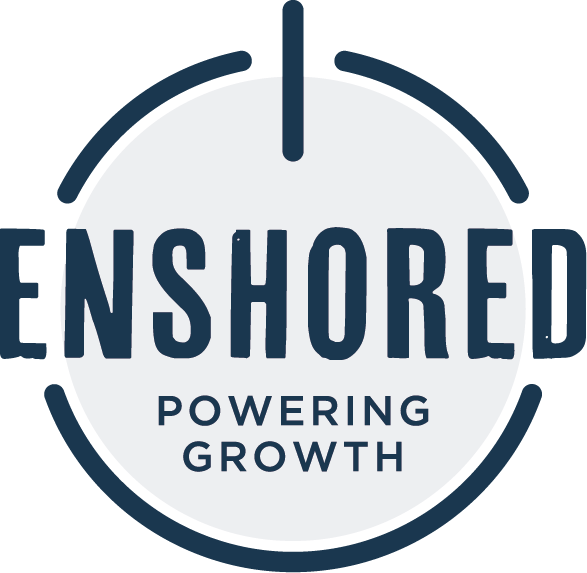Effective contact center outsourcing involves selecting the right partner, ensuring quality training, and scaling efforts. It offers cost savings, expertise, and time to focus on core business areas.
Table of Contents
Tired of managing an in-house contact center? Outsourcing could be your solution. Learn how to harness external contact center services for business growth, selecting the right partner, ensuring quality, and scaling your efforts.
I. Understanding Contact Center Outsourcing
Outsourcing your contact center can scale your business and enhance customer interactions. Here’s what you need to know.
The Essence of Contact Center Outsourcing
Contact center outsourcing involves delegating customer communication tasks to an external agency. This strategic move allows businesses to focus on core competencies while experts handle customer service.
Benefits of Outsourcing Your Contact Center Needs
Outsourcing contact center services provides several benefits, including:
- Expertise: Outsourced firms bring specialized skills to represent your brand effectively.
- Cost-effective: Save on resources and overhead costs of an in-house team.
- Time-Saving: Redirect time from managing customer service to strategic business areas.
Common Misconceptions About Contact Center Outsourcing
Despite its benefits, misconceptions exist. One is that outsourcing means losing control, but with the right partner, you retain control over goals and strategies. Another is that outsourcing is expensive, but it can save money long-term.
II. Planning and Strategy Development
Developing a solid plan is crucial for outsourcing success. Here are key steps:
1. Establishing Clear Goals and Objectives
Define what you hope to achieve: lead generation, customer retention, or market research. Clear objectives help tailor services to meet your needs.
2. Identifying Your Target Audience
Understanding your target audience is essential for creating personalized campaigns. Determine whether you’re targeting businesses (B2B) or individual consumers (B2C), and identify key demographics.
3. Developing a Compelling Script
Craft a script that reflects your brand, highlights benefits, and motivates action. This is not just about what’s said, but also how it’s said. A compelling script is crucial for successful customer interactions.
4. Choosing the Right Time to Call
Timing is crucial. For B2B calls, business hours are optimal; for B2C, early evenings and weekends work best. Choose the time that aligns with your audience’s availability to maximize engagement.
III. Selecting the Right Contact Center Partner
Choosing the right partner is essential for success. Consider these criteria:
1. Criteria for Choosing a Contact Center Company
Look for expertise in your industry, proven success, and cost-effectiveness. Evaluate their track record and ensure they have experience with similar businesses.
2. Questions to Ask Potential Partners
Evaluate partners by asking about their handling of campaigns, strategies, and reporting. Inquire about their approach to quality assurance, training, and how they measure success.
3. Understanding Compliance and Ethics
Ensure your partner adheres to regulatory guidelines to maintain your brand’s reputation. Compliance and ethics are non-negotiable, so verify their adherence to industry standards.
4. Evaluating Technology and Infrastructure
Select a partner with advanced technology to enhance campaign effectiveness. Modern tools and infrastructure can significantly impact the efficiency and success of your outsourcing efforts.
IV. Training and Quality Assurance
Effective training and maintaining high quality are pivotal. Here’s how:
Training Contact Center Agents
Well-trained agents are the backbone of a successful contact center. Training involves:
- Product Knowledge: Ensure agents understand your products or services thoroughly.
- Communication Skills: Train agents in engaging prospects and handling objections.
- Market Understanding: Educate agents about your target market for a tailored approach.
Setting Benchmarks and Monitoring Performance
Use advanced analytics to track key performance indicators and adjust strategies as needed. Benchmarks provide standards against which to measure performance and identify areas for improvement.
Handling Feedback and Continuous Improvement
Encourage feedback and use it to drive continuous improvement in services. Feedback provides valuable insights into performance and areas for enhancement.
V. Managing the Outsourced Contact Center Process
Managing an outsourced contact center involves several key components to ensure smooth operations and maximum efficiency. Here’s how to handle it effectively:
Communication and Collaboration Tips
Maintaining open and frequent communication is critical for a successful partnership with your outsourcing provider. Here are some tips:
- Regular Updates: Schedule regular meetings and updates to discuss progress, address concerns, and make necessary adjustments.
- Clear Channels: Establish clear communication channels and points of contact to streamline interactions and ensure quick response times.
- Collaborative Tools: Use collaborative tools such as project management software and communication platforms to facilitate smooth coordination.
- Feedback Loops: Create feedback loops where both parties can provide input on what’s working and what needs improvement.
Budget Management and Cost-Effectiveness
While outsourcing can be cost-effective, managing your budget effectively remains crucial:
- Transparent Pricing: Ensure the outsourcing partner provides a clear and transparent pricing structure to avoid unexpected costs.
- Cost-Benefit Analysis: Regularly perform cost-benefit analyses to ensure you are getting value for your investment.
- Resource Allocation: Allocate resources efficiently, focusing on areas that yield the highest return on investment.
- Budget Reviews: Conduct periodic budget reviews to track expenses and adjust as needed to stay within financial limits.
Measuring Success and ROI
To understand the impact of your outsourced contact center, it’s essential to measure success and calculate ROI:
- Key Performance Indicators (KPIs): Identify and track KPIs such as call resolution rate, customer satisfaction, and conversion rates to gauge performance.
- Regular Reporting: Request detailed reports from your outsourcing partner to monitor progress and identify areas for improvement.
- Customer Feedback: Collect customer feedback to understand their experience and satisfaction levels with the service provided.
- ROI Calculation: Compare the costs of outsourcing against the benefits gained, such as increased sales and improved customer retention, to calculate ROI.
VI. Scaling and Expanding Your Contact Center Efforts
Once you have established a solid foundation, it’s time to think about scaling and expanding your contact center operations. Here’s how to do it effectively:
When to Scale Your Contact Center Operations
Recognizing the right time to scale is crucial for sustainable growth:
- Consistent Performance: If your contact center consistently meets or exceeds performance benchmarks, it may be time to scale.
- Increased Demand: An uptick in customer interactions or sales inquiries can indicate the need for expanded capacity.
- Feedback Indicators: Positive feedback from customers and stakeholders can signal readiness for growth.
- Operational Stability: Ensure your current operations are stable and well-managed before expanding further.
Expanding into New Markets
Expanding into new markets involves targeting new demographics or geographical areas:
- Market Research: Conduct thorough market research to understand the needs and preferences of new target audiences.
- Localized Strategies: Develop localized strategies and tailor your approach to resonate with the new market.
- Regulatory Compliance: Ensure compliance with local regulations and standards when entering new markets.
- Resource Allocation: Allocate resources strategically to support market expansion without overstretching your existing operations.
Leveraging Multilingual Contact Center Services
Offering multilingual services can significantly enhance your reach and customer satisfaction:
- Diverse Team: Hire or partner with teams that speak the languages of your target markets.
- Cultural Understanding: Ensure your agents understand the cultural nuances and preferences of the markets they serve.
- Technology Support: Use technology that supports multilingual communication, such as translation software and multilingual CRM systems.
- Customer Segmentation: Segment your customer base by language preferences to provide more personalized and effective service.
VII. Navigating Challenges and Pitfalls
Outsourcing your contact center comes with its own set of challenges. Here’s how to navigate them effectively:
Common Challenges in Contact Center Outsourcing
Being aware of potential challenges can help you prepare and mitigate risks:
- Quality Control: Ensuring consistent quality across all interactions can be challenging but is essential for maintaining customer trust.
- Brand Alignment: Making sure the outsourced team understands and represents your brand accurately is crucial.
- Data Security: Protecting customer data and ensuring compliance with data protection regulations is a major concern.
- Cost Management: Balancing cost savings with high-quality service requires careful planning and monitoring.
Strategies for Overcoming Potential Pitfalls
Implementing the right strategies can help you overcome outsourcing challenges:
- Rigorous Training: Provide comprehensive training to ensure the outsourced team understands your brand, products, and customer expectations.
- Quality Monitoring: Use quality monitoring tools and techniques to track performance and identify areas for improvement.
- Strong Contracts: Draft detailed contracts that outline expectations, deliverables, and compliance requirements to avoid misunderstandings.
- Regular Audits: Conduct regular audits to ensure compliance with data security standards and operational excellence.
Maintaining Customer Trust and Satisfaction
Customer trust and satisfaction are paramount for business success:
- Consistent Service: Ensure consistent service quality to build and maintain customer trust.
- Transparent Communication: Keep customers informed about their inquiries or issues and provide timely updates.
- Feedback Mechanisms: Implement feedback mechanisms to collect and act on customer input, demonstrating your commitment to their satisfaction.
- Proactive Problem-Solving: Address issues proactively to prevent them from escalating and ensure a positive customer experience.
VIII. The Future of Contact Center Outsourcing
The future of contact center outsourcing is shaped by emerging trends and technological advancements. Here’s what to expect:
Emerging Trends in Contact Centers
Stay ahead by embracing these trends:
- Personalized Customer Interactions: Leveraging data analytics to personalize customer interactions can enhance satisfaction and loyalty.
- Omni-Channel Support: Providing seamless support across multiple channels, including phone, email, chat, and social media, meets customers where they are.
- Remote Work Models: Remote and hybrid work models for contact center agents can offer greater flexibility and access to a broader talent pool.
- Sustainability Initiatives: Incorporating sustainability initiatives into contact center operations can attract environmentally-conscious customers and partners.
Technological Advancements Impacting Contact Centers
Leverage the latest technology to stay competitive:
- Artificial Intelligence (AI): AI-powered chatbots and virtual assistants can handle routine inquiries, freeing up agents for more complex tasks.
- Data Analytics: Advanced analytics provide insights into customer behavior, helping to refine strategies and improve service delivery.
- Automation Tools: Automation tools streamline workflows, reduce errors, and enhance efficiency in contact center operations.
- Cloud-Based Solutions: Cloud-based contact center solutions offer scalability, flexibility, and improved disaster recovery capabilities.
Adapting to the Evolving Landscape of Customer Communication
The way businesses communicate with customers is evolving. Adapt by:
- Embracing Digital Transformation: Adopt digital tools and platforms to enhance customer interactions and service delivery.
- Focusing on Customer Experience (CX): Prioritize CX by understanding customer needs and delivering exceptional service across all touchpoints.
- Implementing Feedback Loops: Continuously gather and act on customer feedback to improve processes and services.
- Staying Agile: Stay agile and be ready to adapt to changing customer expectations and market conditions.
IX. Conclusion
With the right partner and strategy, contact center outsourcing can drive significant business growth. Ready to elevate your customer service? Contact Enshored today and embark on a journey toward greater success.
FAQ on Contact Center and Call Center Outsourcing
What are contact center services and how can they benefit my business?
Contact center services involve handling customer communications, enhancing relationships, and driving sales.
How does contact center outsourcing work?
It involves hiring an external company to manage customer interactions, leveraging their expertise and technology.
What should I look for in a top contact center company?
Look for a proven track record, experienced staff, advanced technology, and strong regulatory compliance.
How do contact centers differ from call centers?
Contact centers handle multiple communication channels, while call centers focus on phone interactions.
Can I outsource both contact and call center services?
Yes, many businesses outsource both to handle different aspects of customer communication efficiently.
What are the advantages of outsourced contact and call centers?
They offer cost savings, specialized skills, scalability, and focus on core activities.
How do outbound call centers enhance sales efforts?
They proactively reach out to potential customers, increasing sales and market reach.
What factors should I consider when choosing between outsourcing and in-house services?
Consider cost, expertise, flexibility, and control. Outsourcing offers expert resources and savings.
How do top contact centers ensure quality and compliance?
Through rigorous training, adherence to legal standards, and regular quality checks.
What trends are shaping the future of contact and call center outsourcing?
Trends include AI integration, data-driven personalization, and multichannel marketing strategies.


